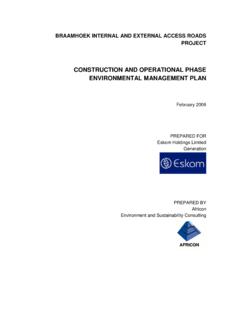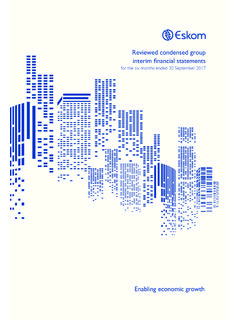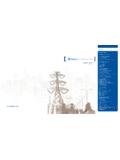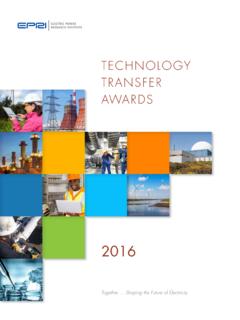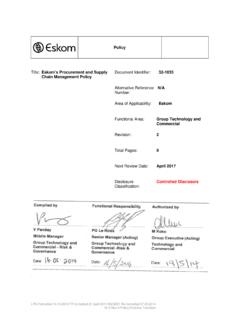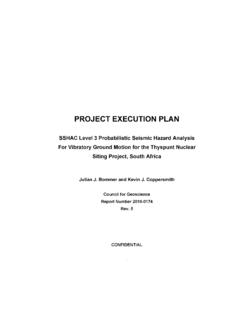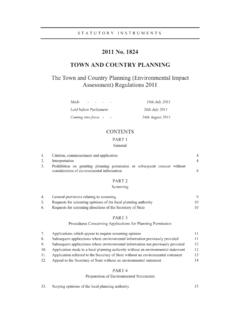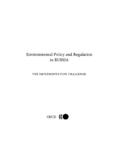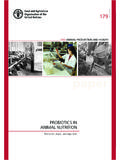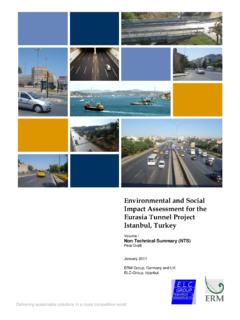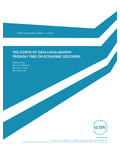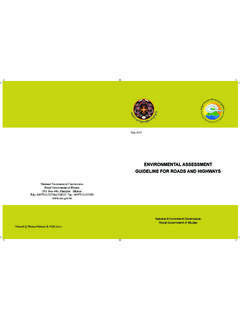Transcription of PLAN OF STUDY FOR ENVIRONMENTAL IMPACT …
1 TSHWANE STRENGTHENING PROJECT PHASE 1, GAUTENG PROVINCE: Draft Scoping Report: Apollo - Verwoerdburg July 2009 plan of STUDY for EIA Page 95 plan OF STUDY FOR ENVIRONMENTAL IMPACT ASSESSMENT CHAPTER 7 A detailed description of the components which form part of the Tshwane Strengthening Project Phase 1, the Scoping process, as well as the issues identified and evaluated through the Scoping phase (to date) have been included in the Draft Scoping Report. This chapter of the report provides the context for the plan of STUDY for the ENVIRONMENTAL IMPACT Assessment (EIA).
2 This plan of STUDY describes how the EIA for the proposed Tshwane Strengthening Project will proceed during the EIA phase. The EIA phase of the STUDY includes detailed specialist studies for those potential impacts evaluated to be of significance. The major findings of the Scoping process (which includes inputs from authorities, the public, the proponent and the EIA specialist team) are used to inform this plan of STUDY for EIA, together with the requirements of the NEMA EIA Regulations and associated guidelines.
3 It should be noted that no specific information requirements for the Scoping Report have been specified by DEAT, in terms of Regulation 29(1)(j) of the EIA Regulations, besides the general requirement to meet Regulations 29 and 30 of Government Notice No. R385 of 21 April 2006. Aims of the EIA The EIA will aim to achieve the following: Provide an overall assessment of the social and biophysical environments affected by the proposed project Assess potentially significant impacts associated with the nominated preferred transmission line corridors and the substation.
4 Identify and recommend appropriate mitigation measures for potentially significant ENVIRONMENTAL impacts Undertake a fully inclusive public involvement process to ensure that I&AP are afforded the opportunity to participate, and that their issues and concerns are recorded The EIA will address potential ENVIRONMENTAL impacts and benefits (direct, indirect and cumulative impacts) associated with all phases of the project including design, construction, and operation and decommissioning, and will aim to provide the ENVIRONMENTAL authorities with sufficient information in order to make an informed decision regarding the project.
5 TSHWANE STRENGTHENING PROJECT PHASE 1, GAUTENG PROVINCE: Draft Scoping Report: Apollo - Verwoerdburg July 2009 plan of STUDY for EIA Page 96 Authority Consultation Consultation with the regulating authorities has been undertaken throughout the Scoping process and will continue throughout the EIA process. On-going consultation will include the following: Invitation to attend a site inspection and consultation meeting during the review period of the draft Scoping Report Submission of a final Scoping Report following the 30-day public review period Submission of a final EIA report following the 30-day public review period and A consultation meeting with DEAT and GDACE in order to discuss the findings and conclusions of the EIA.
6 Selection of Least IMPACT /Preferred Alternatives to be assessed within the EIA The following transmission power line corridor alternatives have been nominated through the scoping process undertaken for further investigation within the EIA phase of the STUDY : Apollo-Verwoerdburg,(2X 400kV loop-in lines from the existing Apollo-Dinaledi transmission line, a total distance of approximately 6km (refer to figure ) In addition, the potential ENVIRONMENTAL impacts associated with the proposed upgrade of the Verwoerdburg substation will be investigated and evaluated in further detail within the EIA phase of the STUDY .)
7 Assessment of Potential Impacts and Recommendations regarding Mitigation Measures In order to make clear recommendations regarding the preferred alternatives for the establishment of the proposed transmission power lines and the substations, more detailed studies are required to be undertaken within the EIA phase. Based on the findings of the Draft Scoping Report, the following issues were identified as being of low significance, and therefore no further investigation within the EIA will be required.
8 Potential impacts on topography Potential impacts on geology and soils A summary of the issues which require further investigation within the EIA phase, as well as the proposed activities to be undertaken in order to assess the significance of these potential impacts is provided within Table The specialists involved in the EIA Phase are also reflected in Table A Peer Review of the EIA process is being undertaken by Dr Pieter J Aucamp of PTERSA. TSHWANE STRENGTHENING PROJECT PHASE 1, GAUTENG PROVINCE: Draft Scoping Report: Apollo - Verwoerdburg July 2009 plan of STUDY for EIA Page 97 Table.
9 Summary of the issues which require further investigation within the EIA phase and activities to be undertaken in order to assess the significance of these potential impacts Issue Activities to be undertaken in order to assess significance of impacts Specialist Biodiversity In order to determine the IMPACT of the proposed development on the biological environment, it is necessary to compiled baseline information of the area in the EIA phase of the project as follows: Survey environmentally sensitive areas in order to verify results of the GIS modelling and scoping assessment Survey representative areas in order to obtain a clear understanding of the nature of sensitivity in specific sites Survey the area for general floristic and faunal diversity (common species, Red Data flora and fauna species, alien and invasive plant species)
10 Assess the potential presence of Red List flora and fauna species Describe the status and importance of any primary vegetation Provide descriptions of ecological habitat types, plant communities and faunal assemblages Compile an ecological IMPACT evaluation, taking the following aspects into consideration: the relationship of potential impacts to temporal scales the relationship of potential impacts to spatial scales the severity of potential impacts the risk or likelihood of potential impacts occurring; and the degree of confidence placed in the assessment of potential impacts.
